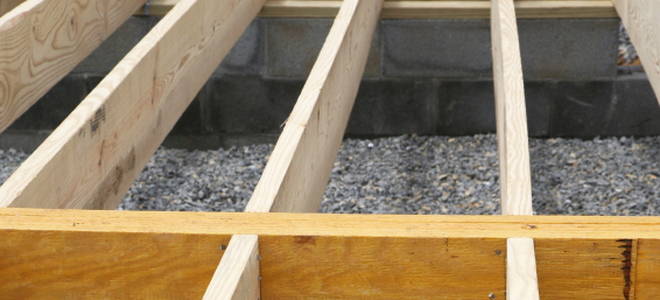So one of the last things that need to be done before sheathing the deck is to fill in with blocking.
Propet floor joist bracing or blocking.
Attached pic is ceiling joist not floor but show what i typically do.
I was always under the impression that bridging was intended to reduce the unsupported length of the beam based on lateral torsional buckling not load distribution.
I prefer cross bracing for two reasons.
In addition to providing lateral support blocking helps transfer weight to adjacent joists so that the floor acts as a unified system.
Nail the block in place with 16d nails on each side of the blocking.
For me the solid blocking takes longer to install but i.
For other floor joists blocking is required along the line of each braced wall in the storey below.
Blocking at the joist ends must be between the edge pair of joists and then at 1 8 m centres maximum see figure 1.
Tom silva explained that the cross bridging transferred the load on the joist to the other joists thus strengthening the floor.
For ground floor joists blocking is generally required along the lines of subfloor horizontal support i e.
The fewer holes any.
Usually solid wood blocking or cross x wood blocking.
If the floor is not flat or level the bracing or blocking is not the culprit.
So where joists span 2 5 m or more and the joists are four or more times their thickness 190 45 mm or larger blocking is required at the mid span.
It installs faster and it leaves an unobstucted bay for mechanicals to be run.
Floor joist bridging vs blocking i like laying 1 1 8 super flat easy to pound t g together dropping a 2x6 from a floor above doesn t put a hole in it.
Tying the joists together with blocking makes the floor even stronger and stiffer.
R505 3 3 1 joist top flange bracing the top flanges of cold formed steel joists shall be laterally braced by the application of floor sheathing fastened to the joists in accordance with section r505 2 5 and table r505 3 1 2.
Repeat this process every 24 to 36 inches down the joists.
Ive done it both ways.
Blocking also needs to be provided at the supporting end of a joist.
Building code requires the use of blocking for floor joists that exceed 2 inches in width by 12 inches in depth.
For the next cavity.
Making professional blocks to make the blocks i cut sections of i joist 1 inches smaller than the space between the joists.
Usually i stick it in somewhere around mid span.
Place the lumber block between the two joists.
This is contrary to my understanding of the purpose of bridging.
Engineered i joists can span long distances to make a flat and solid subfloor.

